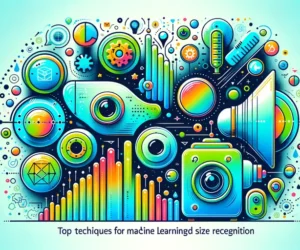
Affordable Machine Learning: Boosting Business Effectiveness

Machine learning (ML) has become a powerful tool for businesses, driving innovation and efficiency. However, the perception that implementing ML solutions is expensive can deter many small and medium-sized enterprises (SMEs) from leveraging this technology. This article explores how affordable machine learning can enhance business effectiveness, providing practical examples, tools, and strategies to implement cost-effective ML solutions.
Leveraging Open-Source Machine Learning Tools
Using Scikit-Learn for Cost-Effective Solutions
Scikit-learn is an open-source ML library for Python that provides simple and efficient tools for data analysis and modeling. It is ideal for SMEs looking to implement machine learning without incurring high costs. Scikit-learn offers a wide range of supervised and unsupervised learning algorithms, including classification, regression, clustering, and dimensionality reduction.
The library's intuitive API and comprehensive documentation make it accessible for users with varying levels of expertise. By leveraging Scikit-learn, businesses can build robust ML models without the need for expensive software licenses.
Here’s an example of implementing a simple classification model using Scikit-learn:
Improving Anomaly Detection in Manufacturing with ML and Control Chartsfrom sklearn.datasets import load_iris
from sklearn.model_selection import train_test_split
from sklearn.ensemble import RandomForestClassifier
from sklearn.metrics import accuracy_score
# Load the iris dataset
iris = load_iris()
X = iris.data
y = iris.target
# Split the dataset into training and testing sets
X_train, X_test, y_train, y_test = train_test_split(X, y, test_size=0.2, random_state=42)
# Train a Random Forest classifier
clf = RandomForestClassifier(n_estimators=100, random_state=42)
clf.fit(X_train, y_train)
# Make predictions and evaluate the model
y_pred = clf.predict(X_test)
accuracy = accuracy_score(y_test, y_pred)
print(f'Accuracy: {accuracy}')Utilizing TensorFlow for Scalable ML
TensorFlow is another open-source ML library that provides a flexible and comprehensive ecosystem for building and deploying machine learning models. Developed by Google, TensorFlow supports both deep learning and traditional ML algorithms, making it suitable for a wide range of applications.
TensorFlow's scalability allows businesses to start with small models and scale up as needed. The library's support for distributed computing and integration with cloud services ensures that ML solutions can grow alongside the business, maintaining affordability.
Here’s an example of implementing a neural network using TensorFlow:
import tensorflow as tf
from tensorflow.keras.models import Sequential
from tensorflow.keras.layers import Dense
from sklearn.datasets import load_iris
from sklearn.model_selection import train_test_split
from sklearn.preprocessing import StandardScaler
# Load and preprocess the iris dataset
iris = load_iris()
X = iris.data
y = iris.target
X_train, X_test, y_train, y_test = train_test_split(X, y, test_size=0.2, random_state=42)
# Standardize the data
scaler = StandardScaler()
X_train = scaler.fit_transform(X_train)
X_test = scaler.transform(X_test)
# Build a neural network model
model = Sequential([
Dense(64, activation='relu', input_shape=(4,)),
Dense(64, activation='relu'),
Dense(3, activation='softmax')
])
# Compile the model
model.compile(optimizer='adam', loss='sparse_categorical_crossentropy', metrics=['accuracy'])
# Train the model
model.fit(X_train, y_train, epochs=10, batch_size=32)
# Evaluate the model
loss, accuracy = model.evaluate(X_test, y_test)
print(f'Accuracy: {accuracy}')Adopting Cloud-Based ML Services
Cloud-based ML services provide a cost-effective way for businesses to leverage machine learning without significant upfront investments in hardware and infrastructure. Services like Google Cloud AI, Amazon SageMaker, and Microsoft Azure Machine Learning offer scalable and flexible solutions for building, training, and deploying ML models.
Enhancing Gaming Experiences with Neural Networks and Machine LearningThese services provide pre-built models, automated ML tools, and integration with other cloud services, making it easier for businesses to implement and scale ML solutions. By adopting cloud-based ML services, businesses can pay for only what they use, ensuring affordability and flexibility.
Implementing Practical ML Applications
Enhancing Customer Experience
Machine learning can significantly enhance customer experience by providing personalized recommendations, improving customer service, and predicting customer behavior. By analyzing customer data, businesses can tailor their offerings to individual preferences, leading to increased satisfaction and loyalty.
For instance, recommendation systems powered by ML can suggest products or services based on a customer's past behavior and preferences. This personalized approach not only enhances the customer experience but also drives sales and revenue.
Here’s an example of implementing a simple recommendation system using Scikit-learn:
Machine Learning for Heart Disease Prediction: A Promising Approachfrom sklearn.neighbors import NearestNeighbors
import numpy as np
# Sample customer purchase data
customers = np.array([[1, 0, 1], [0, 1, 1], [1, 1, 0], [0, 0, 1]])
# Train a Nearest Neighbors model
model = NearestNeighbors(n_neighbors=2, metric='cosine')
model.fit(customers)
# Find recommendations for a new customer
new_customer = np.array([[1, 0, 0]])
distances, indices = model.kneighbors(new_customer)
print(f'Recommended customers: {indices}')Optimizing Business Operations
Machine learning can optimize various business operations, including inventory management, supply chain optimization, and demand forecasting. By analyzing historical data, ML models can predict future trends and help businesses make informed decisions.
For example, demand forecasting models can predict future sales based on historical data and external factors such as seasonality and economic indicators. This enables businesses to manage inventory effectively, reduce costs, and avoid stockouts or overstock situations.
Here’s an example of implementing a demand forecasting model using TensorFlow:
import tensorflow as tf
from tensorflow.keras.models import Sequential
from tensorflow.keras.layers import Dense
import numpy as np
# Sample sales data (monthly sales for 12 months)
sales = np.array([50, 55, 60, 65, 70, 75, 80, 85, 90, 95, 100, 105])
# Prepare the data for time series forecasting
X = sales[:-1].reshape(-1, 1)
y = sales[1:]
# Build a simple neural network model
model = Sequential([
Dense(10, activation='relu', input_shape=(1,)),
Dense(1)
])
# Compile the model
model.compile(optimizer='adam', loss='mse')
# Train the model
model.fit(X, y, epochs=200, batch_size=1)
# Make predictions for the next month
next_month_sales = model.predict(np.array([[105]]))
print(f'Predicted sales for the next month: {next_month_sales}')Improving Marketing Strategies
Machine learning can enhance marketing strategies by enabling targeted campaigns, sentiment analysis, and customer segmentation. By analyzing customer data, businesses can identify different customer segments and tailor their marketing efforts to each group.
Enhancing Sports Betting with Machine Learning in PythonSentiment analysis, for example, uses natural language processing (NLP) to analyze customer reviews and feedback. This helps businesses understand customer sentiments and adjust their marketing strategies accordingly. Targeted campaigns based on customer segments and preferences can lead to higher engagement and conversion rates.
Here’s an example of implementing sentiment analysis using TextBlob:
from textblob import TextBlob
# Sample customer reviews
reviews = [
"I love this product! It's amazing.",
"Terrible service. I'm very disappointed.",
"Great value for money. Highly recommend.",
"Not satisfied with the quality."
]
# Analyze sentiment for each review
for review in reviews:
analysis = TextBlob(review)
sentiment = "positive" if analysis.sentiment.polarity > 0 else "negative"
print(f'Review: {review}\nSentiment: {sentiment}\n')Strategies for Cost-Effective ML Implementation
Prioritizing Key Use Cases
Identifying and prioritizing key use cases for machine learning can help businesses maximize the impact of their ML initiatives while controlling costs. By focusing on high-impact areas that align with business goals, companies can ensure that their ML investments deliver significant value.
Key use cases may include enhancing customer experience, optimizing operations, and improving marketing strategies. By evaluating the potential ROI and feasibility of each use case, businesses can allocate resources effectively and prioritize initiatives that offer the most substantial benefits.
Improving Event Horizon Telescope Images with Machine LearningLeveraging Pre-Trained Models
Pre-trained models provide a cost-effective way to implement machine learning without the need for extensive training and computational resources. These models are pre-trained on large datasets and can be fine-tuned for specific tasks, saving time and reducing costs.
Services like TensorFlow Hub, Hugging Face Transformers, and Google AI offer a wide range of pre-trained models for various applications, including image recognition, natural language processing, and text generation. By leveraging these models, businesses can achieve high performance with minimal investment.
Here’s an example of using a pre-trained BERT model for text classification with Hugging Face Transformers:
from transformers import pipeline
# Load pre-trained BERT model for sentiment analysis
classifier = pipeline('sentiment-analysis')
# Sample text
text = "The product is fantastic and I love using it!"
# Perform sentiment analysis
result = classifier(text)
print(result)Investing in Training and Education
Investing in training and education is crucial for building in-house expertise and ensuring the successful implementation of machine learning. By upskilling employees, businesses can reduce reliance on external consultants and foster a culture of innovation and continuous improvement.
Creating an Image Dataset for Machine Learning: A Python GuideTraining programs, online courses, and workshops can help employees develop the skills needed to implement and maintain ML solutions. Platforms like Coursera, Udacity, and edX offer comprehensive courses on machine learning and data science, enabling employees to learn at their own pace.
Additionally, encouraging collaboration and knowledge sharing within the organization can lead to the development of innovative solutions and best practices. By investing in training and education, businesses can build a strong foundation for long-term success with machine learning.
Evaluating the Impact of ML Initiatives
Measuring ROI and Business Impact
Measuring the return on investment (ROI) and business impact of machine learning initiatives is essential for demonstrating value and securing ongoing support. By tracking key performance indicators (KPIs) and comparing them to baseline metrics, businesses can quantify the benefits of their ML efforts.
KPIs may include increased sales, improved customer satisfaction, reduced operational costs, and enhanced efficiency. Regularly reviewing these metrics and conducting impact assessments can help businesses
If you want to read more articles similar to Affordable Machine Learning: Boosting Business Effectiveness, you can visit the Applications category.



You Must Read